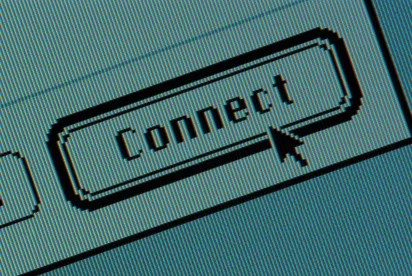The Central Government Portal
 The creation of the Central Government Portal (CGP) has signaled the beginning of the digitalization of Slovakia. The CGP is an information system designed to provide users with official electronic communication with public authorities and with centralized and unified access to information resources through a single entry point.
The creation of the Central Government Portal (CGP) has signaled the beginning of the digitalization of Slovakia. The CGP is an information system designed to provide users with official electronic communication with public authorities and with centralized and unified access to information resources through a single entry point.
Over the course of a few blog postings, we will look at some of the specifics relating to the digitalization of Slovakia. This post looks in more detail at the electronic mailboxes.
Electronic Mailboxes
Obviously, if the communication with the public authorities should be electronic, there should be a “digitalized” individual/entity on the other end with an electronic mailbox. Electronic mailboxes have to be activated by June 30, 2017. Otherwise, you may be delivered an official letter from the public authority or a court that you will find out about when it may be too late.
Electronic mailboxes are regulated by the Act No. 305/2013 Coll. on e-Government, as amended. The Government Office of the Slovak Republic is responsible for the creation of electronic mailboxes for individuals (persons over 18 years old), entrepreneurs (i.e. individuals carrying out business activity), legal entities, public authorities, as well as so called subjects of international law (various international organizations).
This service is free of charge and everyone has one electronic mailbox for each position/status. This means that if an individual is also an entrepreneur, he/she has two electronic mailboxes. One mailbox as a citizen and the second mailbox as an entrepreneur. Electronic mailboxes will be used for:
-
Communication between citizens, entrepreneurs and business entities on one side and public authorities on the other side (which are obliged to use this method of communication, unless otherwise stipulated by law).
-
Electronic delivery of official decisions, notifications and other messages from public authorities.
Electronic delivery
The legal effects of such delivery are the same as if the documents were delivered in a paper form.
As normal paper form documents, a document including its attachments (for entrepreneurs, legal entities, individuals) can be sent electronically as a standard delivery or “to addressee only” and is deemed to be delivered as follows:
-
In case of “Standard” delivery: on the day immediately following the day of receipt of the message; or
-
In case of “Personal” or “Addressee Only”: (i) on the day and at the time stated on the electronic return receipt (first, you have to confirm the electronic return receipt and afterwards you will receive the message including all attachments); or (ii) on the 15th day after receipt of the electronic return receipt that you did not confirm (15 days is a period for confirmation of return receipt), even if you have not received the document itself (i.e. presumed delivery).
How to Activate an Electronic Mailbox
Only legal entities have the statutory obligation to activate an electronic mailbox. Citizens can do so but do not have to.
If you are a legal entity registered in the Commercial Register, an electronic mailbox will be activated either:
-
Automatically when a person authorized to access the electronic mailbox (e.g. director) logs into the mailbox for the first time;
-
By July 1, 2017, at the latest, when all electronic mailboxes of legal entities and branch offices are activated. If you are a legal entity not registered in the Commercial Register, an electronic mailbox will be activated automatically by May 1, 2018. This specific regulation applies to, for example, civil associations, foundations, non-profit organizations, etc. But of course, if they wish so, these entities can activate a mailbox even before May 1, 2018. Mailbox can be accessed by either:
-
a statutory body of a legal entity or its member;
-
a proxy (i.e. a person authorized by a statutory body of a legal entity), but only to a limited extent.
To access and operate the mailbox, users must have:
-
an internet connection;
-
specific software (available on the portal, free of charge);
-
card reader;
-
an identification card with an electronic chip (obtainable from the Department of Documents of the District Directorate of the Police Corps);
-
BOK (six digit personal security code).
These requirements cause problems for statutory representatives – foreigners who do not have Slovak IDs. But there are the following solutions to this problem:
-
Granting a power of attorney to an individual (a Slovak citizen with a Slovak ID card with an electronic chip), who will take legal actions with respect to the mailbox to the specified extent;
-
Obtaining a residency card with a chip and BOK, which offers the same possibilities as Slovak ID card; or
-
Obtaining an alternative authenticator – the newest method of access to the electronic mailbox. It is a card with an electronic chip and BOK and is valid for three years.
Alternative authenticators are issued free of charge. The applicant must be an individual that does not have any other official authenticator, and must be either a member of the statutory body of a legal person registered in the Commercial Register or a branch office director. The alternative authenticator can be obtained by any workplace of the Police Corps (e.g. at Client’s Center at Tomášikova 46.). The applicant has to submit also his/her ID card or passport or other public document from which it is possible to verify submitted data.
To conclude, the entire concept of e-Government in Slovakia is a great concept which brings many positives and is inevitable in a digital era of technological advances, such as the Internet of Things, big data, blockchain, start-up ecosystem etc. However, this system is evolving and is not working ideally yet.



 />i
/>i
